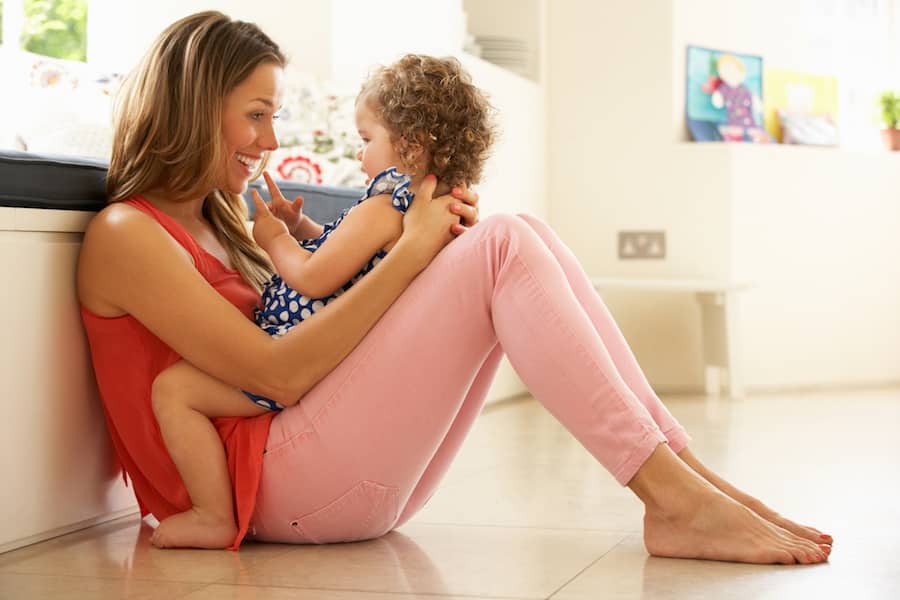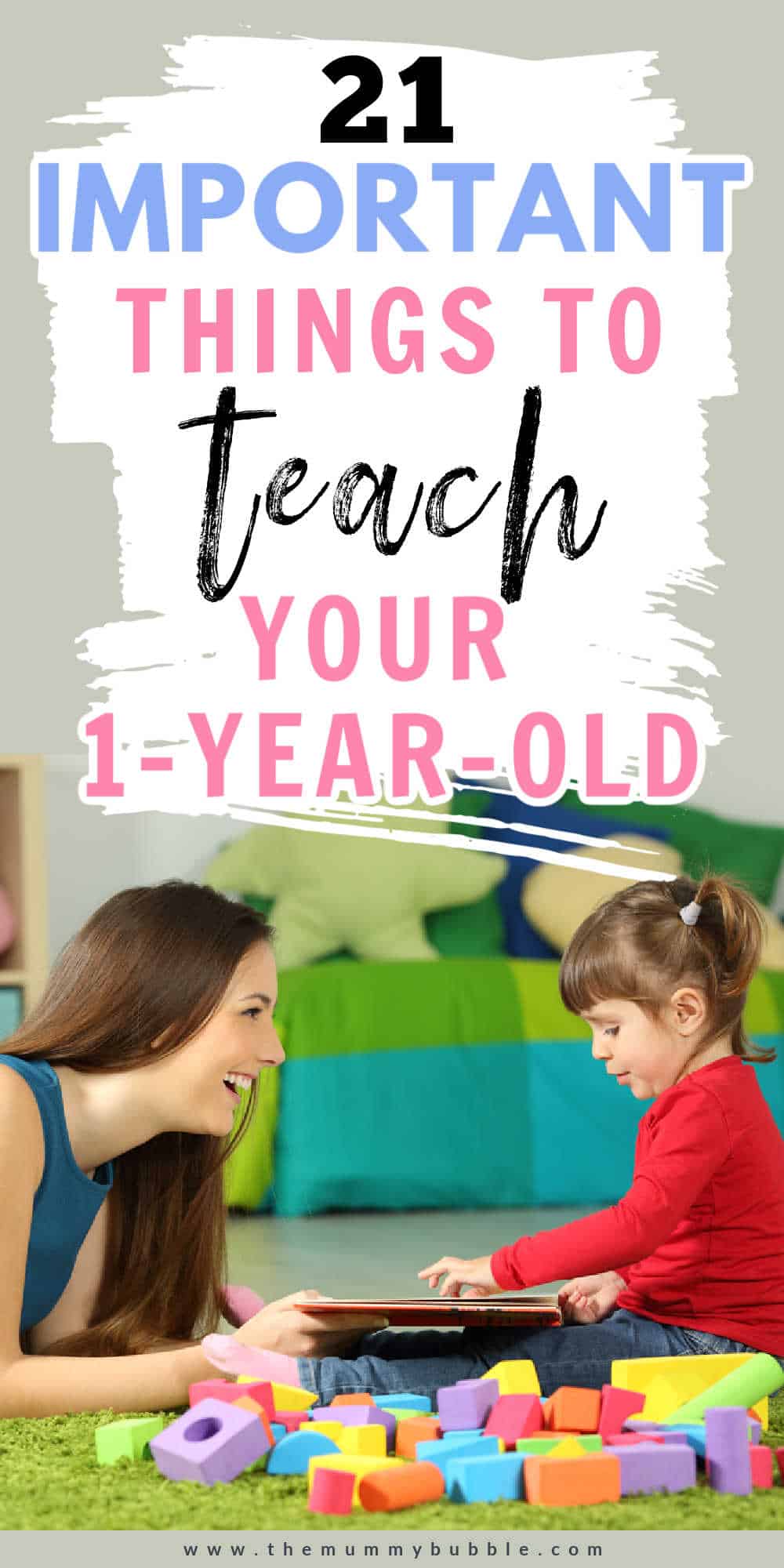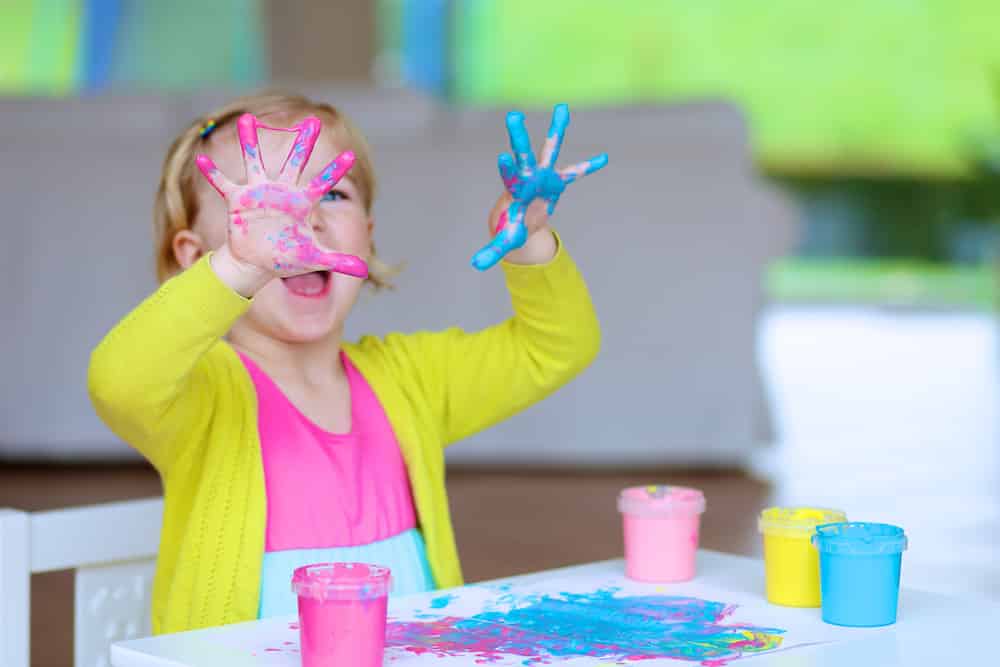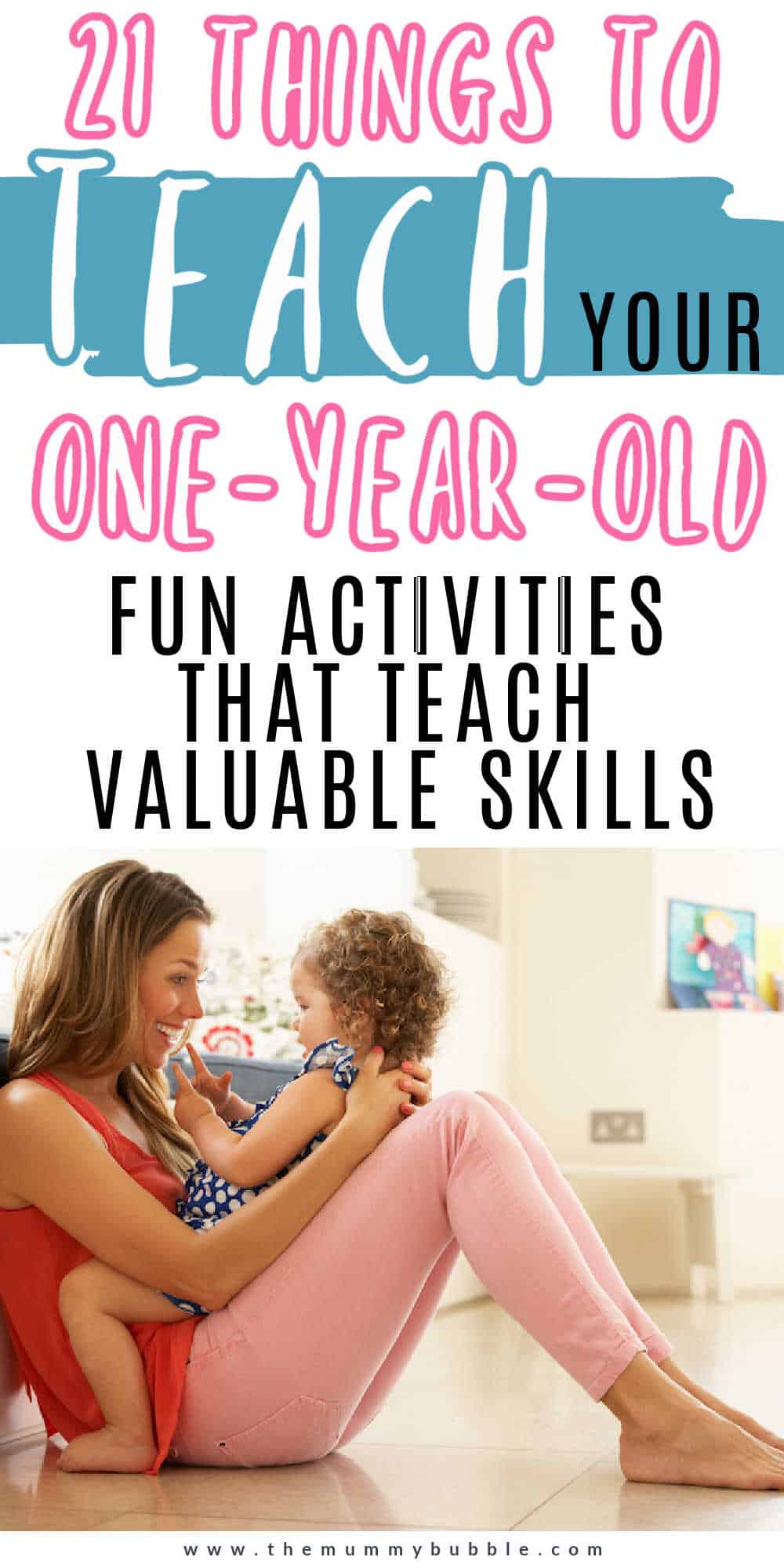Easy Things to Train Old School Mobiel
Wondering what to teach your one-year-old?
Having fun and playing with your baby is about more than just bonding.
As adults our view of learning involves sitting quietly reading a book or being lectured to in a classroom.

But for babies and toddlers, their learning happens through the magic of play.
From the age of one to two your toddler will pick up a lot of new skills, such as talking, more confident walking, creativity, balance and more precise use of their hands and fingers.
The best thing you can do to help nurture their development is to play with them in a variety of different ways.
You don't need to spend a fortune on loads of fancy toys. Much of your baby's learning will be done by simply exploring the world around them with you at their side to help them.
This article contains some valuable lessons to teach your one-year-old through fun activities.
Making time for your one-year-old
We all get the parental guilts about something. How much time we spend actively playing with our kids is definitely number one for me!
As someone who works from home, I often find it difficult to switch off, and mobile phones provide a very addictive distraction.
Having said that, you don't have to fill entire days with entertaining your one-year-old. In fact at times its important for them to enjoy some independent play.
On the days when I am with my children, I try to allocate two hours to totally focus on them. These two hours may involve going out somewhere fun, baking at home or doing some crafts.
Now, I am terrible at crafts. They have to be really simple for me!
But I find tons of easy things I can do with my kids. If you're looking for inspiration you can head over to one of these posts:
50 crafts for toddlers
40 things to do with your baby at home
40 fun things to do with bored toddlers
Whatever you do, I recommend putting your phone out of reach or better yet in another room where there are no distractions.
And while spending time with your baby is heartwarming, let's be honest that at times for us adults it can be a little boring. So to keep yourself stimulated, try a few different activities. Start with a tea party and then move on to reading a few books, for example.
Now, let's get to the learning through play activities! Remember, it's important to supervise your child with toys such as pens and crayons to ensure they are safe. Stick to toys that are recommended for their age group to be extra safe.
This post contains affiliate links. This means I make a small commission on purchases made via the links but it does not cost you any more.

Things to teach your 1-year-old
1. How to hold a pen
The best way to develop your baby's strength in their hands and teach them the best way to hold a pen is to let them practice as much as possible.
Your baby will love to scribble with crayons and pens. There are some great chunky crayons and pens you can buy which make it much easier for little hands to grasp and use.
These crayons which are shaped like eggs are especially good at age one.
Their drawings won't start to take proper form until around 18 months, but in the meantime give them lots of different colours to experiment with.
2. New words
Speak to your one-year-old about absolutely everything around them. Holding regular conversations with your child is one of the best things you can do, even if they aren't saying much back to you in return.
When you are using something, tell your baby what it is. When out for walks, point at everything you see and explain what it is.
Keep on repeating the words, and encourage them to say it back to you.
Types of words to help your toddler to learn include:
- Colours. You can get great books that make teaching colours easy. You can also drop the colours into everyday conversation by pointing out what colour their blocks are or what colour pen they are holding.
- Shapes. A shape sorter toy is a great way for little ones to learn about shapes, as well as teaching them to develop their problem-solving skills.
- Household items. Whenever you're cooking, cleaning or getting dressed, speak to your toddler about what you have. Ask them "what's this?" regularly so they can practice the words they have learned and be really enthusiastic when they get it right.
- Body parts. The Head, Shoulders, Knees and Toes song is a great introduction to body parts for babies and toddlers. You can also try just sitting with them and pointing to your ears, then pointing to theirs and repeating the word.
- Types of vehicle. Most toddlers are fascinated by cars and tractors! A few toy vehicles can be a good way to teach them the difference between police cars and fire engines. There are also puzzles featuring different vehicles which can be a great way to get them interested in learning the different words.
3. The fun of reading
Instilling a love of reading and books in your child can start as soon as they are born!
When my daughters were newborns we would read aloud from Time magazine. They had zero clue what we were saying, but we were exposing them to the act of reading, and lots of new words.
A book has always been a really important part of our bedtime routine, and we try to read at least two every night before they go to bed.
Try reading to your one-year-old at least once a day at bedtime. If you find yourself with a quiet few minutes, then pick up a book and read to them. There's really no way you can read too much to them!
Point to the pictures and ask your one-year-old to repeat back to you what the picture if off. Get them to practice the words.
Some great books for your one-year-old include:
- Goodnight Moon
- The Very Hungry Caterpillar
- Where's Spot
- Dear Zoo
- Guess How Much I Love You
- 10 Little Pirates
4. Holding a conversation
Even if your toddler isn't saying many words, you can still experience a conversation with them.
Try sitting down in front of them, stay focused on them and actively listen when it's their turn to speak.
If your little one isn't talking very much, then try speaking for them and asking if they agree with what you just said.
5. Being creative
Creative play is really important for little ones and gives them an opportunity to learn a range of things from fine motor skills to cause and effect. Try fun activities such as finger paint, or foot painting, to encourage their creative side.
You can also get giant chalk which you can use to colour on the patio of pavement outside your home.
6. Bravery
I confess that I get really nervous watching my kids play in a playground. When I see them getting close to an edge or struggling to climb a ladder, I worry they're about to fall.
But I try to hold back on telling them "be careful" all of the time. I want them to learn to take risks, be brave and try new things.
So take your little one to an (age-appropriate) playground and let them explore, let them climb and let them occasionally fall over. This teaches them it's OK to try new things.
7. Playing with others
Don't expect miracles when it comes to your toddler and sharing. They will still be snatching toys from other kids and getting into a few disagreements as they play.
But social skills are really important, and it's great for children to get to play with others their age whenever possible.
A few hours of childcare a week can give your child a good opportunity to play with others in a different environment.
Otherwise research local play groups and clubs for kids your child's age in your area.
8. Being independent
Your child can begin to attempt to do a few things for themselves at age one.
Things they could start to do include helping to get their clothes on in the morning and the PJs on at night.
When brushing their teeth, you could also let them do it themselves for a few seconds after you have brushed for them.
Ask your child to tidy up their toys when they have finished playing with them too. This is definitely a habit that's worth instilling in them from as early as possible.
9. Making music
You don't have to have a ton of musical instruments. Make a drum kit using pots and pans and use wooden spoons as drumsticks.
Sing nursery rhymes to your child too and encourage them to sing along with you. If you're unsure of the words, there are lots of singalong nursery rhyme videos on YouTube.
10. Being imaginative
Encourage your one-year-old to use their imagination. A play kitchen is a wonderful toy at this age, as your child can copy what you get up to in your own kitchen.
You could also get a few dressing up clothes for them so they can pretend to be something else.
Other great imaginative play activities include holding a tea party for all of their toys, going on a pretend bear hunt in the garden and playing shops with toy food.
11. Building structures
A set of wooden blocks is a brilliant toy for age one to two. Your child can try lining them up or stacking them on top of each other.
These MegaBloks were great first building blocks for my kids. They're a little easier for your toddler to stack compared to the wooden blocks, which get wobbly and fall over if they're not lining them up quite right.
The blocks are really chunky and easy for their hands to hold. Challenge them to build a house or a castle.
12. Messy play

Getting messy is a great way for your child to have fun and unleash their creativity.
Finger painting, playing with squashy food like jelly or spaghetti or making edible paint using food dye and yoghurt are great messy play ideas for your little one.
13. Exploring outdoors
Let your toddler get outside and explore the sights and textures of outdoors.
Show them the different types of leaves that different trees produce. You could give them a small bucket and encourage them to collect different things.
Challenge them to a scavenger hunt where they need to find a leaf, a stone, a twig and a flower.
14. Ordering things by size
This activity helps your child start to understand the meaning of bigger and smaller.
Get their favourite stuffed toys and put them in a line from big to small.
Talk to them about which toys are bigger than the others and explain who is the biggest in your family.
15. Stacking cups
Playing with stacking cups is great for developing your one-year-old's hand-eye co-ordination as well as helping them understand how to balance things.
My daughters are three and five but they still play with the stacking cups, although these days they tend to use them as part of tea parties they do still often have a go at stacking them up into a tower.
16. Baking
Making and decorating simple biscuits with your one-year-old is a great way to introduce them to baking and cooking.
While your one-year-old may not be able to do loads when it comes to the baking process, they can help stir the mixture and they will love to dollop icing on top of the baked biscuits.
They could also help put sprinkles and other decorations on top too. There's a great recipe for star biscuits here.
17. Building a den
Building a den, or putting up a tent, is a wonderful opportunity for imaginative play.
Your little one can help to furnish the den with cushions and toys. You could talk to them about what your den is. Is it a house, or a pirate ship, or a cave?
18. Filling and pouring with sand or water
You can get amazing sand and water tables which your toddler can stand at and play with.
Alternatively get a couple of different sized cups, old medicine plungers (the big chunky ones, cleaned) and measuring jugs for the bath so your child can fill them with water then pour it out.
This is a great introduction to learning about capacity, as you can chat to your child about which jug holds more water.
It's also brilliant for their physical skills and it's an activity that can keep them happy for ages.
In the summer, try filling a large plastic crate or a bucket with water to do this activity outdoors.
19. Counting
Your one-year-old may not be able to count to 10 for a little while yet, but there's no harm in starting to teach them numbers.
When they are playing with toys, hold them up or point to them while counting to show your child how many there are.
Try getting a colouring book featuring numbers for your little one to colour, or you can find some number printable pages online.
20. Making a collage
Give your one-year-old a variety of objects such as a feather (you can buy packs of craft feathers from craft shops or online), lollipop sticks, squares of tissue paper and squares of card.
Give them some child-safe glue or a Pritt Stick for kids and let them create their own collage.
This is great for developing their fine motor skills as well as encouraging them to be creative.
21. Freedom to explore
Give your little one the chance to choose what they want to play with.
Having toy storage that gives them easy access to their toys can really help with this.
You can also try putting out two or three different types of toys for them to choose from (blocks, dolls, soft toys, animals toys).

Source: https://themummybubble.co.uk/things-to-teach-your-one-year-old/